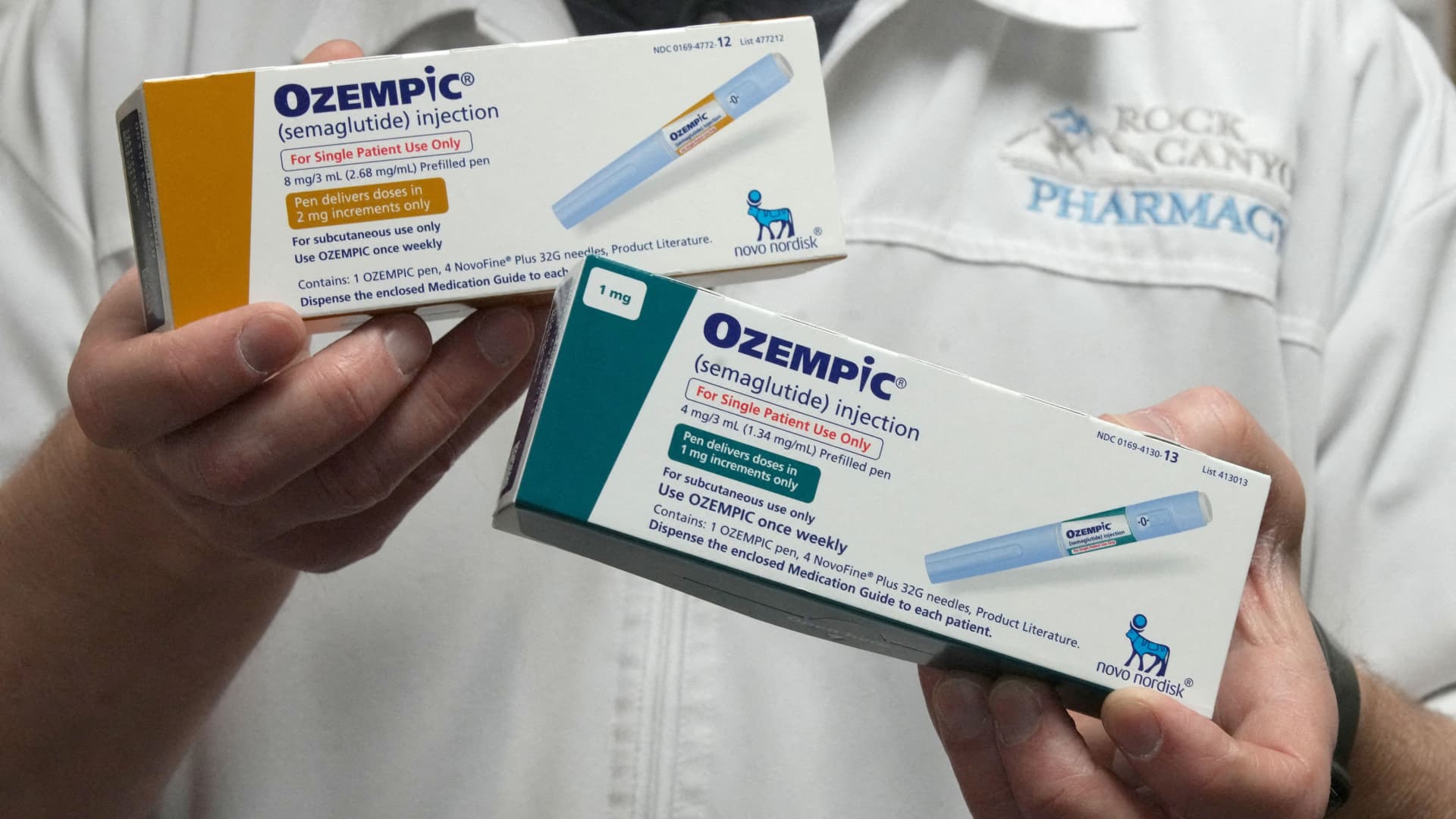Ozempic, the blockbuster diabetes treatment from Novo Nordisk, could be next in line in the price negotiations between manufacturers and Medicare.
The Biden administration this week released the first 10 drugs that will be subject to those talks, a process that aims to lower the prices of medications that Medicare Part D spends the most on. The changes will take effect by 2026.
Ozempic will likely be eligible for negotiations by the time the next round of drugs is selected in 2025, for price changes that will go into effect in 2027.
Several analysts expect the weekly injection to be a top choice because Medicare Part D already spent more than $2 billion on the drug in 2021 — an amount close to some of the medicines chosen for price talks this week. TotalPart D spending in 2021 was $98 billion.
They assume that Medicare will spend a great deal on Ozempic in the coming years, given the fervent demand for the drug and similar treatments that can help patients shed unwanted pounds.
“Ozempic is going to be the biggest one that people are going to watch really closely in the second round of negotiations,” Cantor Fitzgerald analyst Louise Chen told CNBC.
Novo Nordisk’s Rybelsus, a diabetes drug taken orally, could also be on the list because it contains the same active ingredient as Ozempic. Most Part D plans cover both for patients with Type 2 diabetes, but do not cover the drugs for off-label uses such as weight loss.
Meanwhile, Novo Nordisk’s obesity injection Wegovy, which uses that same ingredient, likely won’t be targeted for negotiations in the near term because Medicare doesn’t cover weight loss drugs.
A spokesperson for Novo Nordisk didn’t directly comment on the potential for Ozempic to be included in the next round of talks. The spokesperson said the company “supports policies to ensure patients can afford their medicines,” but criticized the negotiation process, which is conducted by the federal Centers for Medicare and Medicaid Services, or CMS.
“Unfortunately, we have seen CMS take aggressive steps to carry out unilateral price setting without consideration for the impact on patients living with chronic disease or the overall healthcare system,” the spokesperson said.
Ozempic, Wegovy and Rybelsus are part of a class of drugs called GLP-1s, which mimic a hormone produced in the gut to suppress a person’s appetite.
Wegovy and Ozempic sparked a weight loss industry gold rush last year, with high-profile names such as billionaire tech mogul Elon Musk among recent users. But the injections are costly, as prices range from around $900 to more than $1,300 per month.
Medicare and private insurers typically secure discounts and rebates on the drugs they cover, but it’s unclear how large they are.
Why Ozempic wasn’t eligible this year
The Medicare program spent $2.6 billion on Ozempic in 2021, according to AARP research. Based on that number, AARP said Ozempic was the 10th costliest drug covered by Medicare Part D.
But Ozempic was excluded in the first round of negotiations due to the federal government’s guidelines for selection.
The guidelines require drugs to have been on the market for at least seven years after their initial approval or licensing in the U.S., as of the date that the Biden administration publishes the list of products selected.
The Food and Drug Administration approved Ozempic for diabetes in December 2017, making it ineligible for the initial round of drugs unveiled this week. But Ozempic will likely be eligible for the next list of medications, which will be published in February 2025, Evercore ISI analyst Umer Raffat said in a research note.
“This means Novo’s Ozempic (along with Rybelsus) could be on next year’s list,” he wrote.
Several analysts agree, citing the amount Medicare spent on Ozempic in 2021. That places the drug at the very top of prediction lists for the second round of negotiations.
Slashing the price of Ozempic through negotiations could lead to significant savings for the Medicare program.
Medicare would save an estimated $1.3 billion if the price of Ozempic was reduced by 40%, according to research from Leerink Partners analyst David Risinger. Meanwhile, the program would save only around $342 million if Rybelsus was cut by the same amount.
It’s unclear how much patients pay out of pocket for Ozempic, which has a list price of $936 per month in the U.S. But a lower negotiated price of Ozempic will likely benefit the roughly 28% of Medicare beneficiaries who have diabetes.
Wegovy fate is uncertain
There’s still a chance that negotiations could affect Wegovy, particularly if Medicare decides to start covering the injection and other weight loss treatments before the second round.
Analysts from Citigroup, in a note last week, said that’s likely because recent research demonstrated Wegovy’s heart health benefits.
Earlier this month, Novo Nordisk released late-stage trial data showing that Wegovy slashed the risk of serious heart-related problems such as heart attacks or strokes by 20%.
The results suggest Wegovy has significant health benefits beyond helping patients lose weight, which could potentially lead to expanded use of the drug and increased coverage by insurers.
Other analysts say that savings from the first round of drugs could help pave the way for Medicare to cover Wegovy.
Four of the 10 drugs selected for negotiations cost Medicare more than $17 billion a year before any discounts or rebates. Lowering prices for those drugs could potentially “free up” Medicare’s budget and make it easier for the program to cover popular GLP-1s like Wegovy, according to a note from Wells Fargo analyst Mohit Bansal.
